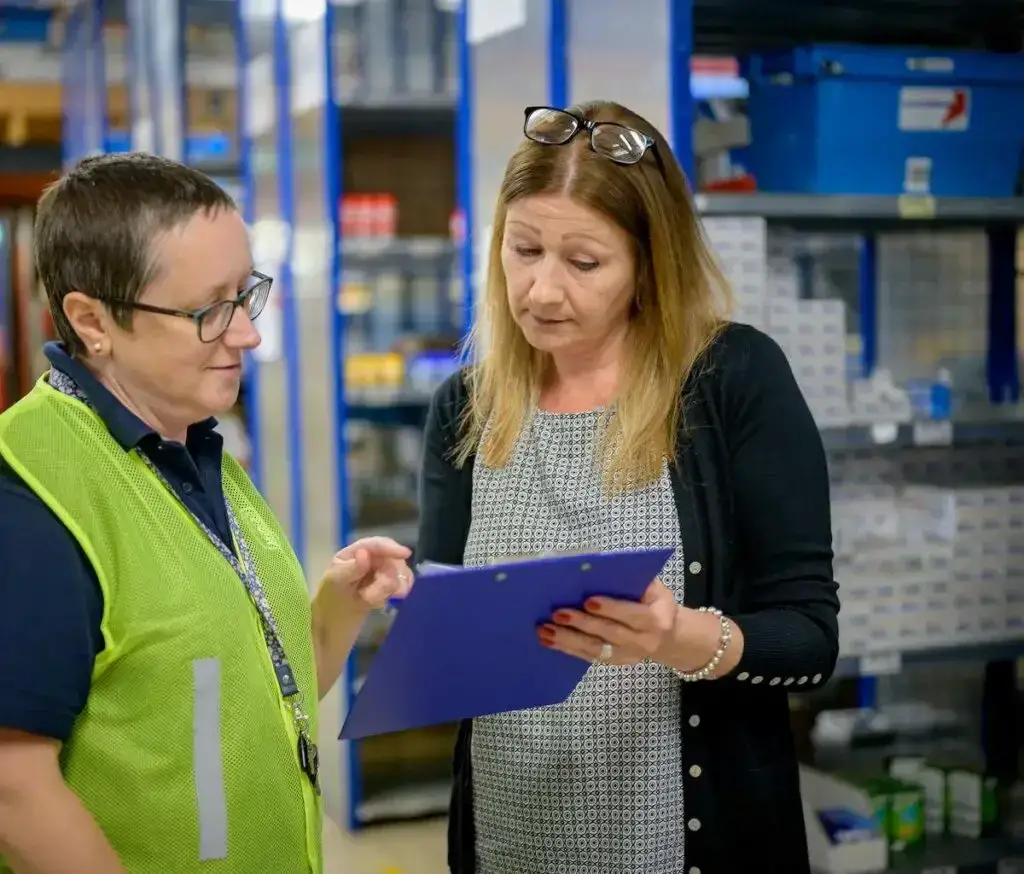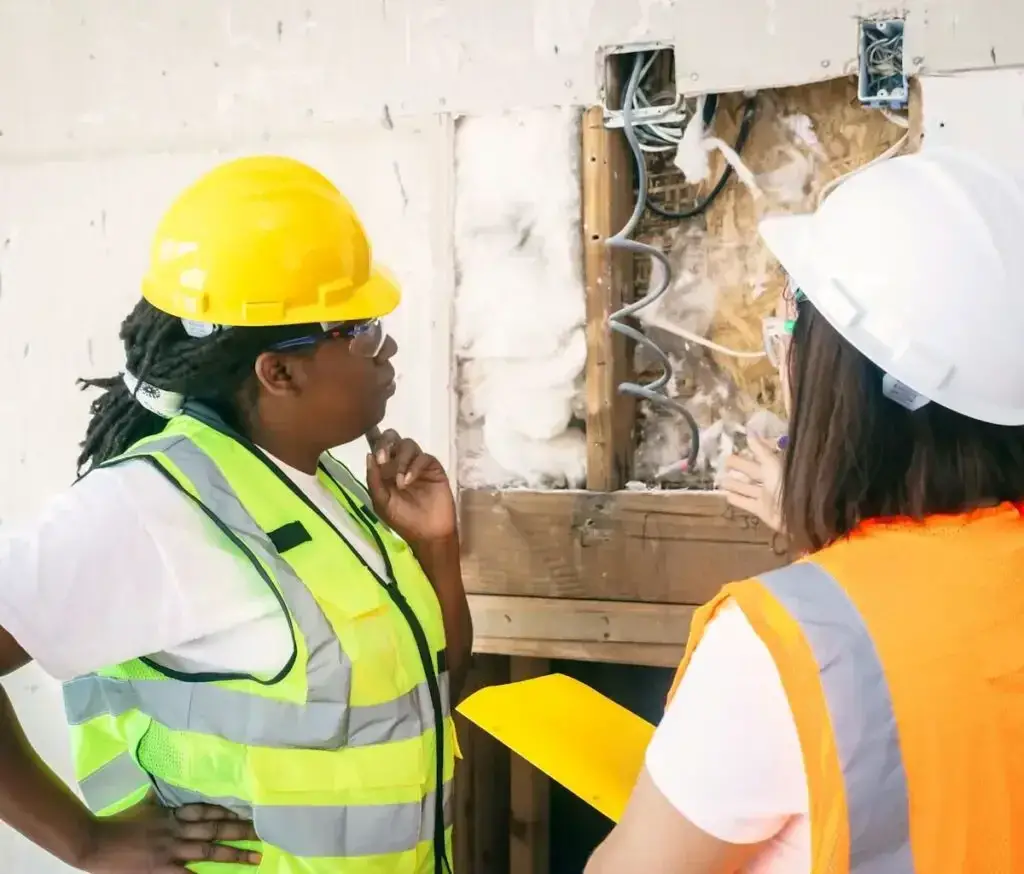Welcome to our comprehensive guide on building inspections in Queensland! If you’re planning to buy or sell property, it’s crucial to understand the importance of building inspections and how they play a significant role in ensuring your investment’s safety and value.
In this content piece, we’ll define building inspections in Queensland, explain their significance, and provide you with a clear plan on what you can expect throughout the process.
Table of Contents
Building Inspections in Queensland

A. Types of Building Inspections Available
When it comes to building inspections in Queensland, there are several types available to cater to different needs:
- Pre-purchase building inspections: These inspections are conducted before purchasing a property to identify any potential issues or defects.
- Routine inspections: These inspections are performed periodically to ensure that the building is maintained in good condition.
- Specialized inspections: These inspections focus on specific areas such as pest inspections, which look for signs of pest infestations.
Read More on Importance of Building Inspection Before Purchasing a Property
B. Building Inspection Process and Requirements
Here is a breakdown of the building inspection process and the requirements in Queensland:
- Preparing for a building inspection: Before the inspection, it is crucial to gather all relevant documents and provide access to the property.
- Booking an inspection with a qualified inspector: It is essential to hire a qualified and experienced inspector who is licensed to conduct inspections in Queensland.
- On-site inspection procedures: During the inspection, the inspector will thoroughly examine the property, looking for any defects or issues.
- Documentation and reporting requirements: After the inspection, the inspector will provide a detailed report highlighting any defects or issues found during the inspection.
C. Building Defects and Common Issues Found During Inspections in QLD
As I noted, building inspections in Queensland often uncover various defects and common issues, including:
- Structural defects: These include cracks in walls or foundations, sagging roofs, or faulty framing.
- Plumbing and electrical issues: Inspections may uncover problems with plumbing systems, such as leaks or blocked pipes, as well as electrical issues like faulty wiring or outdated components.
- Water damage and dampness: Queensland’s climate can lead to water damage and dampness issues, which can cause structural damage and mold growth.
- Roofing and insulation problems: Inspections often identify problems with roofing materials, such as missing tiles or deteriorated shingles, as well as inadequate insulation.
Read More on Building Inspections in West Auckland: Safety and Compliance
Building Inspection Reports in Queensland
Without a doubt, building inspection reports play a crucial role in the property buying process in Queensland. They provide valuable insights into the condition of a property, highlighting potential risks and deficiencies that may not be evident to the untrained eye.
These reports are not only beneficial for buyers but also for property owners who wish to assess the state of their property.
Significance of Building Inspection Reports
Building inspection reports offer a detailed examination of the property’s condition. They go beyond the surface evaluation and delve into every nook and cranny, uncovering any hidden issues that might exist. This comprehensive assessment ensures that buyers and property owners have a clear understanding of the property’s current state.
Moreover, building inspection reports highlight potential risks and deficiencies. They identify any structural issues, safety hazards, or maintenance requirements that may need immediate attention.
By flagging these issues early on, the reports assist in preventing future problems and help property owners mitigate any potential risks.
Furthermore, building inspection reports support decision-making for buyers and property owners. Armed with all the necessary information about a property’s condition, prospective buyers can make informed decisions about their purchase.
Similarly, property owners can prioritize repairs and improvements based on the recommendations provided in the report.
- Includes 360 dream home plans in full color.
- Over 250 photos.
- Designs in Craftsman, Country, Contemporary and Traditional styles.
- Easy-to-read floor plans and elevations.
- Ideal for homeowners, builders, designers, and architects.
- Comprehensive guide to selecting and planning a desired single-story home.
Read More on What is Site Inspection? All You Need to Know
Components of a Comprehensive Building Inspection Report
A comprehensive building inspection report consists of various key components:
1. Introduction and Summary
The report begins with an introduction and summary section that provides a brief overview of the inspection process and the property’s key findings. This summary acts as a snapshot of the overall condition of the property.
2. Inspection Findings and Observations
This section includes detailed information about the inspector’s findings and observations during the inspection. It covers various aspects such as the condition of the structural elements, electrical systems, plumbing, roofing, and more. It provides a comprehensive assessment of the property’s overall state.
3. Recommendations for Repairs and Improvements
Based on their findings, the inspector suggests recommendations for necessary repairs and improvements. These recommendations prioritize the issues that require immediate attention and provide guidance for enhancing the property’s overall condition.
Read More on What is 4 Way Inspection? The Ultimate Guide
4. Visual Evidence Through Photographs
Building inspection reports often include visual evidence in the form of photographs. These photographs help illustrate the inspector’s findings and provide a clearer understanding of the issues identified.
5. Compliance With Building Regulations and Standards
Building inspection reports also assess whether the property complies with relevant building regulations and standards. This evaluation ensures that the property meets the necessary safety and quality standards set by the governing authorities.
Read More on Container Pools Brisbane – Discover the Brilliance
Understanding and Interpreting a Building Inspection Report

It is essential to engage a qualified professional to interpret the building inspection report accurately. They possess the expertise to decipher complex information and provide an unbiased interpretation to clients.
As a client, there are a few key sections to focus on when reading the report:
1. Summary
The summary section provides a concise overview of the inspection’s key findings and recommendations. It serves as a quick reference to understand the overall condition of the property.
2. Inspection Findings
Pay attention to the detailed inspection findings section, which provides an in-depth analysis of the property. It highlights any significant issues, potential risks, or deficiencies that require attention.
3. Recommendations
The recommendations section outlines the necessary repairs and improvements suggested by the inspector. Consider these recommendations while assessing the overall cost and effort required to bring the property up to the desired standard.
For further clarification, clients can ask the inspector specific questions about their findings and recommendations. This will help ensure a complete understanding of the report and aid in decision-making.
Read More on How to Adhere to Legal Weight Limits for 40′ Shipping Container
Qualified Building Inspectors in Queensland
Building inspectors play a crucial role in ensuring the safety and quality of properties in Queensland. They are highly trained professionals who conduct thorough examinations of buildings, ensuring compliance with regulations and standards.
Role of a Building Inspector
Ensuring compliance with regulations and standards: Building inspectors are responsible for ensuring that construction projects adhere to the relevant regulations and industry standards. They carefully assess the structural integrity, electrical systems, plumbing, and other important aspects of a property to identify any potential issues.
Conducting thorough examinations of properties: Building inspectors rigorously inspect every nook and cranny of a property, including its exterior, interior, foundation, and roofing. Their expertise allows them to identify hidden defects or potential hazards that may impact the safety and longevity of the building.
Providing professional insights and recommendations: Qualified building inspectors possess extensive knowledge and experience in the construction industry. They provide valuable insights and recommendations based on their findings, helping property owners make informed decisions about their investments.
Promoting safety and quality in the construction industry: Building inspectors play a vital role in maintaining the overall safety and quality of the construction industry in Queensland. By enforcing regulations and standards, they contribute to the prevention of accidents, substandard construction practices, and compromised structural integrity.
Read More on 20′ Container Legal Weight for Safe and Efficient Transportation
Qualifications and Certifications of Building Inspectors
Educational requirements and training: Building inspectors typically have a background in engineering, architecture, or construction. They undergo extensive training to develop a deep understanding of building codes, regulations, and inspection techniques.
Licensing and registration in Queensland: In Queensland, building inspectors must be licensed and registered with the relevant authorities. This ensures that they meet the state’s requirements and are equipped to perform inspections in a professional manner.
Specializations and areas of expertise: Some building inspectors specialize in specific types of inspections, such as pre-purchase inspections, pest inspections, or commercial building inspections. They may also have expertise in particular building components, such as electrical systems or plumbing.
Read More on The Environmental Benefits of Shipping Container Homes
What to Expect From a Qualified Building Inspector in QLD
Inspection process transparency: Qualified building inspectors in Queensland follow a transparent inspection process, allowing property owners to understand the steps involved and ask any questions they may have.
Prompt delivery of detailed inspection reports: Once the inspection is complete, a qualified building inspector will provide a comprehensive report detailing their findings. This report is typically delivered promptly, ensuring that property owners have the necessary information to make important decisions.
Professional conduct and ethical standards: Qualified building inspectors adhere to strict professional conduct and ethical standards. They prioritize the well-being and interests of their clients, maintaining confidentiality and objectivity throughout the inspection process.
Read More on Modular Container Restaurant: Revolutionary Solutions
Compliance and Enforcement of Building Inspection Regulations in QLD

In order to ensure the safety and quality of buildings in Queensland, there are strict regulations and standards that must be adhered to. The compliance and enforcement of these regulations play a crucial role in maintaining the integrity of the construction industry.
A. Overview of Building Regulations and Standards in Queensland
1. Legal frameworks and legislation:
Building inspection regulations in Queensland are governed by a range of legal frameworks and legislation. These include the Building Act 1975, the Plumbing and Drainage Act 2002, and the Queensland Building and Construction Commission Act 1991, among others.
2. Building codes and guidelines:
Queensland follows the National Construction Code (NCC), which consists of the Building Code of Australia (BCA) and the Plumbing Code of Australia (PCA). The NCC sets out the minimum requirements for the design, construction, and performance of buildings in Queensland.
Read More on Modular Container Homes – Exploring a Unique World
B. Compliance Monitoring and Enforcement
1. Roles of government bodies and authorities:
The Queensland Building and Construction Commission (QBCC) is the primary regulatory authority responsible for monitoring and enforcing building inspection regulations. They ensure that building work is carried out by licensed professionals and compliant with the applicable codes and standards.
2. Penalties for non-compliance:
Non-compliance with building inspection regulations in QLD can result in significant penalties. Depending on the nature and severity of the breach, penalties may include fines, sanctions, or even prosecution. These penalties aim to deter non-compliance and safeguard the interests of property owners and occupants.
3. Reporting building defects and unprofessional conduct:
In the event of building defects or unprofessional conduct by a building inspector, individuals can report such incidents to the QBCC. The QBCC investigates these reports and takes appropriate action to rectify any breaches of regulations and ensure compliance with the required standards.
Read More on Shipping Containers Philadelphia – Unbelievable Agility
Cost and Fees Associated with Building Inspections in Queensland
Factors Influencing the Cost of Building Inspections
When it comes to building inspections in Queensland, several factors influence the overall cost of the service:
- Size and complexity of the property: Larger and more complex properties tend to require more time and resources to inspect thoroughly, which can affect the cost.
- Type and scope of inspection required: Different types of inspections, such as pre-purchase inspections or pest inspections, may have varying levels of complexity and associated costs.
- Additional specialized inspections: In some cases, additional specialized inspections such as pool safety inspections or asbestos testing may be required, which can add to the overall cost.
Read More on Are Shipping Container Homes Legal In Georgia? Find Out Why
Average Costs Associated With Building Inspections in QLD
The cost of building inspections can vary depending on the type of inspection and the service provider. Here is an overview of the average range of fees for different types of inspections:
- Pre-purchase inspections: On average, pre-purchase inspections can range from $300 to $600.
- Building and pest inspections: The combined cost of building and pest inspections can range from $400 to $800.
- Pool safety inspections: Pool safety inspections typically cost around $200 to $400.
It’s important to note that these are just average estimates, and the actual cost may vary depending on the specific circumstances and service provider.
In addition, some building inspection companies may offer additional charges or discounts for specific circumstances. Before booking a building inspection, it’s always a good idea to inquire about any potential additional charges or available discounts.
- PORTABLE AND POWERFUL: 6 gallon, 155 PSI and 2.6 SCFM*.
- MULTI-PURPOSE USE: Includes a nailer, stapler, brad nailer, 16-gauge stainless steel finish nailer, 3/8” crown stapler, 18-gauge brad nailer, 25’ air hose, and quick coupler.
- EFFICIENT DESIGN: Pancake-style tank for optimal stability, rubber-footed design, and extra wide handle for portability.
- CONVENIENT USE: Includes a 1/4” NPT industrial quick-connect coupler and two interchangeable pressure regulators, for effortless transition between sensitive and high-pressure settings.
- WEIGHT: 34.50 lbs.
- ENERGY STAR CERTIFIED: Maximum efficiency and reduced environmental impact.
Read More on Ultimate Truth About Shipping Container Homes In California
Conclusion
Recap of the importance of building inspections in Queensland:
Building inspections are crucial in Queensland to ensure the safety, quality, and compliance of buildings. They provide valuable insight into the condition of properties, identifying any potential issues and allowing for necessary repairs or improvements.
With the ever-changing regulations and standards, building inspections play a vital role in maintaining the integrity of constructions.
Highlights of the key topics covered in the content plan:
- Building inspections in Queensland
- Building inspection reports in Queensland
- Qualified building inspectors in Queensland
- Compliance and enforcement of building inspection regulations in QLD
- Cost and fees associated with building inspections in Queensland
Encouragement to engage a qualified building inspector for a professional and informative experience:
Don’t take chances with the safety and quality of your property. Engaging a qualified building inspector ensures you have an expert eye assessing your building, providing you with reliable information and recommendations.
They have the knowledge and expertise to thoroughly inspect your property and deliver a comprehensive report that will guide you in making informed decisions about repairs, purchases, or renovations.
By involving a professional, you can have peace of mind knowing that you are investing in a thorough and accurate assessment of your property.
Read More on The Best Amount Of Gas A Biodigester Can Give You



